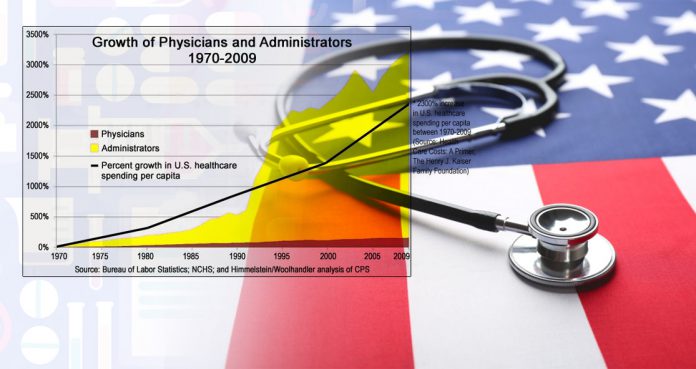A new study, reported in the Annals of Internal Medicine, has found that American insurers and providers spent over $800 billion on administration in 2017.
Researchers explained that an average person is spending nearly $2,500 a year to useless bureaucracy, which is four times the per-capita administrative costs in Canada’s single-payer system.
The researchers said cutting down US administrative costs to the $550 per capita (in 2017) level in Canada could have saved US healthcare more than $600 billion.
Lead study author Dr. David Himmelstein said, “The average American is paying more than $2,000 a year for useless bureaucracy. That money could be spent for care if we had a ‘Medicare for all program.’”
Dr. Himmelstein and his team examined all Medicare filings made by hospitals and nursing homes. They compared the data to the Canadian data, which came from the Canadian Institute for Health Information.
Upon breaking down the 2017 per-capita health administration costs in the US and Canada, the researchers found:
health insurer overhead accounted for $844 in the US versus $146 in Canada
hospital administration was $933 in the US versus $196 in Canada
nursing home, home care, and hospice administration was $255 in the US versus $123 in Canada
physicians’ insurance-related costs were $465 in the US versus $87 in Canada
The study also found that the US administrative costs increased by more than 3 percent since 1999.
Explaining why US administrative costs are so high, Dr. Himmelstein said, “It’s because the insurance companies and health care providers are engaged in a tug of war, each trying in its own way to game the system.”
He explained that medical coding, which is done based on the patient’s treatment, makes a huge difference in the amount paid by insurance companies. For instance, he said, “If a patient comes in because of heart failure and the visit is coded as an acute exacerbation of the condition, the payment is significantly higher than if the visit is simply coded as heart failure.”
“[The study] looked at how many characters were included in an average physician’s note in the US and in other countries,” Dr. Himmelstein noted. “Notes from US physicians were four times longer to meet the bureaucratic requirements of the payment system.”























